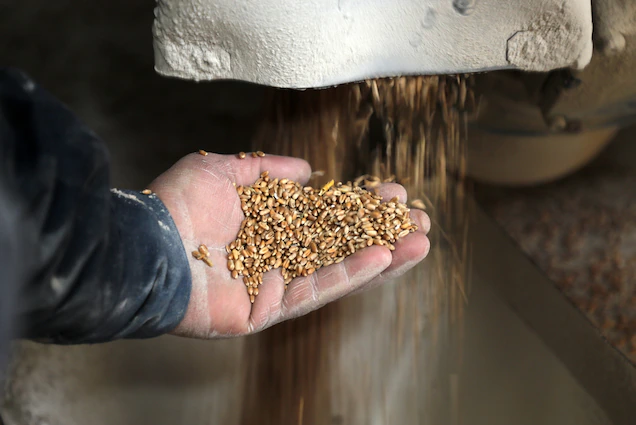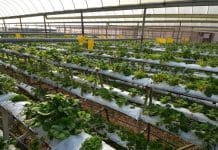Even before the Russia-Ukraine war that broke out this year, The Food and Agriculture Organization (FAO) reported that global food prices have hit the highest level in over a decade after rising by more than 30% in the last year, the United Nations. In the final quarter of 2021, figures highlighted by FAO on the soaring cost of cereals and vegetable oils around the world. Vegetable oil prices hit a record high after rising by almost 10% in October. Disruptions to supplies, high commodity prices, factory closures and political tensions are helping to push up prices.
With the ongoing war between Russia and Ukraine has been exacerbated the spike in food prices. The combined production of Russian Federation and Ukraine amounted to 30 per cent of global wheat exports and 20 per cent of maize. With the scarcity of these commodities, food prices have been in the upward trend since. The World Bank’s Food Commodity Price Index, which reached a record high in nominal terms during March-April 2022, is up 15% over the previous two months and more than 80% higher than two years ago. Countries with low food security index are going to be hit-hard. It is forecasted that the numbers of undernourished people could increase by 13 million this year.
To quote the authors of the IPES-Food report believe it is increasingly likely that an additional 13.1 million people around the world will face undernourishment. This includes 6.4 million in the Asia-Pacific region and 5.1 million in Sub-Saharan Africa, by using modeling by FAO.
This will inevitably link to the issue of food security in Malaysia.
Malaysia’s 2020 Global Food Security Index (GFSI) ranking at 43rd is the second best among Southeast Asian countries after Singapore. To give a perspective of how well this nation performs vis-a-vis others,Singapore was ranked 19th in the index in 2020 while the top spot went to Finland.
The GFSI considers the issues of food affordability, availability, quality and safety, and natural resources and resilience across a set of 113 countries. The index is a quantitative and qualitative benchmarking model constructed from 59 indicators that measure the drivers of food security across both developing and developed countries. It is noteworthy that GFSI has been revised to incorporate the ‘natural resources and resilience’ category into the main index. This category assesses a country’s exposure to the impacts of a changing climate, its susceptibility to natural resource risks, and how the country is adapting to these risks, all of which impact the incidence of food insecurity in a country.
The Economist Intelligence Unit (EIU) updates the model annually to capture year-on-year changes in structural factors impacting food security.
Perhaps it is not the first time that think-tanks, opposition MPs and analysts call out to the leaders of this nation to pay attention to various challenges to strengthen the nation’s food security such as dependence on food imports, increasing demand, climate change and natural resource constraints.
The arable land of this nation has been on a downward trend by 2.5% in 2018, meaning that the productivity of food must be increased with lesser land. Land is not a issue when technology and innovation The come to play. Case-in-point, the Netherlands is the world exporter food as measured by value (after United States) even though it is a small and densely populated country. How does the Netherlands achieve this? By using the world’s most efficient agricultural technologies. The future of sustainable agriculture has already taken shape in the Netherlands on thousands of modest family farms. Also, Singapore with its tiny land mass, has come up with creative ways of increasing food supply by encouraging planting of edible food in urban farms.
The case of treating food independence like national security issue. If we examine France and United States, both have 2 common points: militarily strong as well as high independence of food or food security. Even China treats its food security equally important if not more important than its national security. Browsing through the books published in Mandarin, you would not be surprised to find books with titles like, “War in foodstuff”. The word “war” here connotes strategic moves, preparations for worst-case scenario, setting up of food reserves, building-up or strengthening muscles of food security. In a nutshell, how to be independent of food imports and not be threatened when supply is cut off or literally be “strangled” by the very act of deficiency of food.
It is no secret that most of the food commodities are controlled by the big corporations of the world. To quote what Nick Jacobs, Director of IPES-Food said, “the real problem is that most of the world’s grain reserves are in the hands of big corporations, and they have little interest in disclosing those stocks or releasing them while prices are still rising. Uncertainty allows financial speculators to bet on food commodities, driving up real-world prices even further, and leaving low-income countries unable to afford to import the staple foods on which their populations depend.”
Food protectionism. To make matters worse, some countries have imposed exports curbs when the prices hit hard. By clamping down on exports of staples including grains, cooking oil and pulses. Throughout the history, whenever the survival issue bit, so did stability. The threat of social unrest have led to an increase in exporters banning overseas sales or imposing taxes and quotas. These steps are severely impacting the developing countries that depend on international markets for food imports.
Not too late for more strategic efforts across governmental departments, agencies, communities to address the issue of food dependency and sufficiency. While this nation has spent billions on military, there is no reason to neglect food security and sufficiency when it relates to sustainable development.









